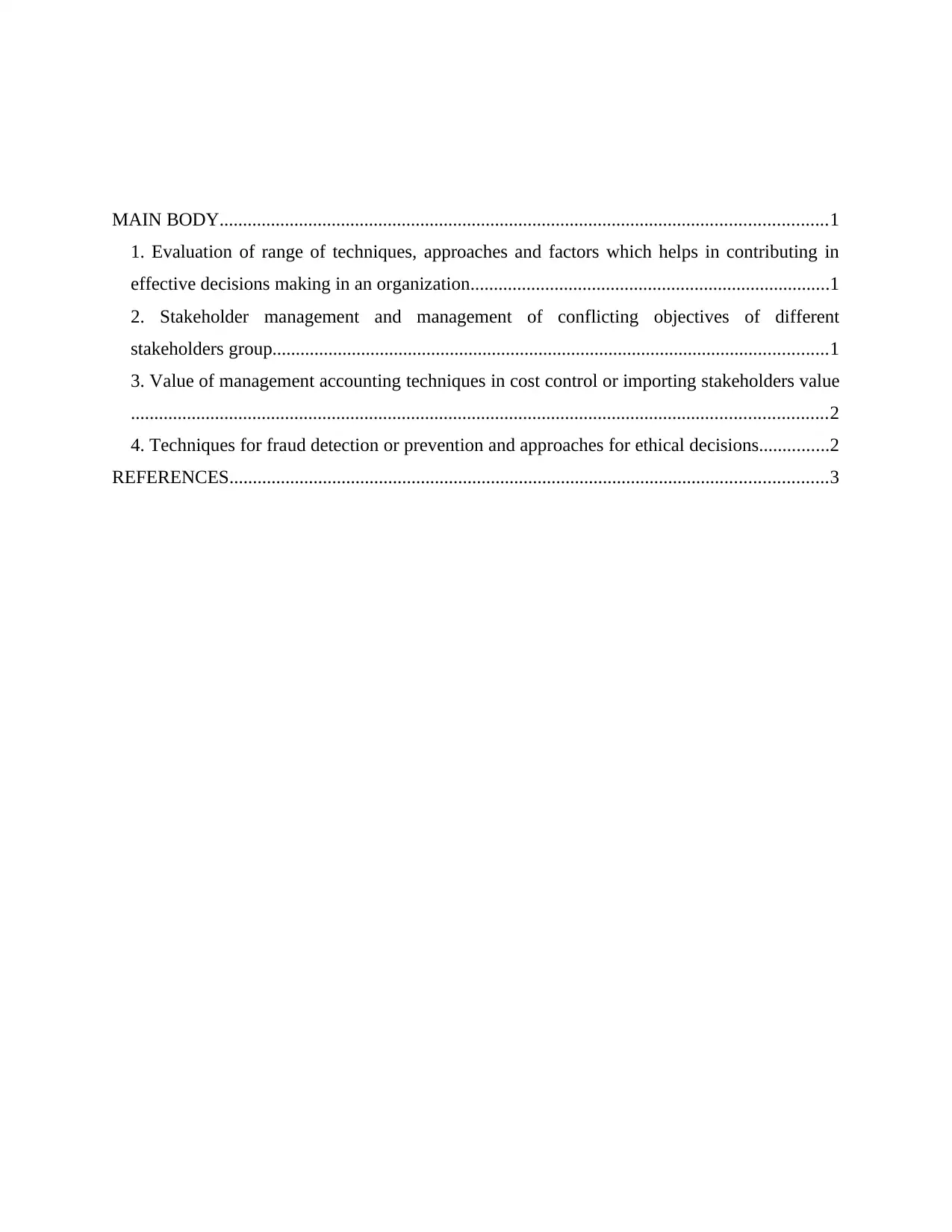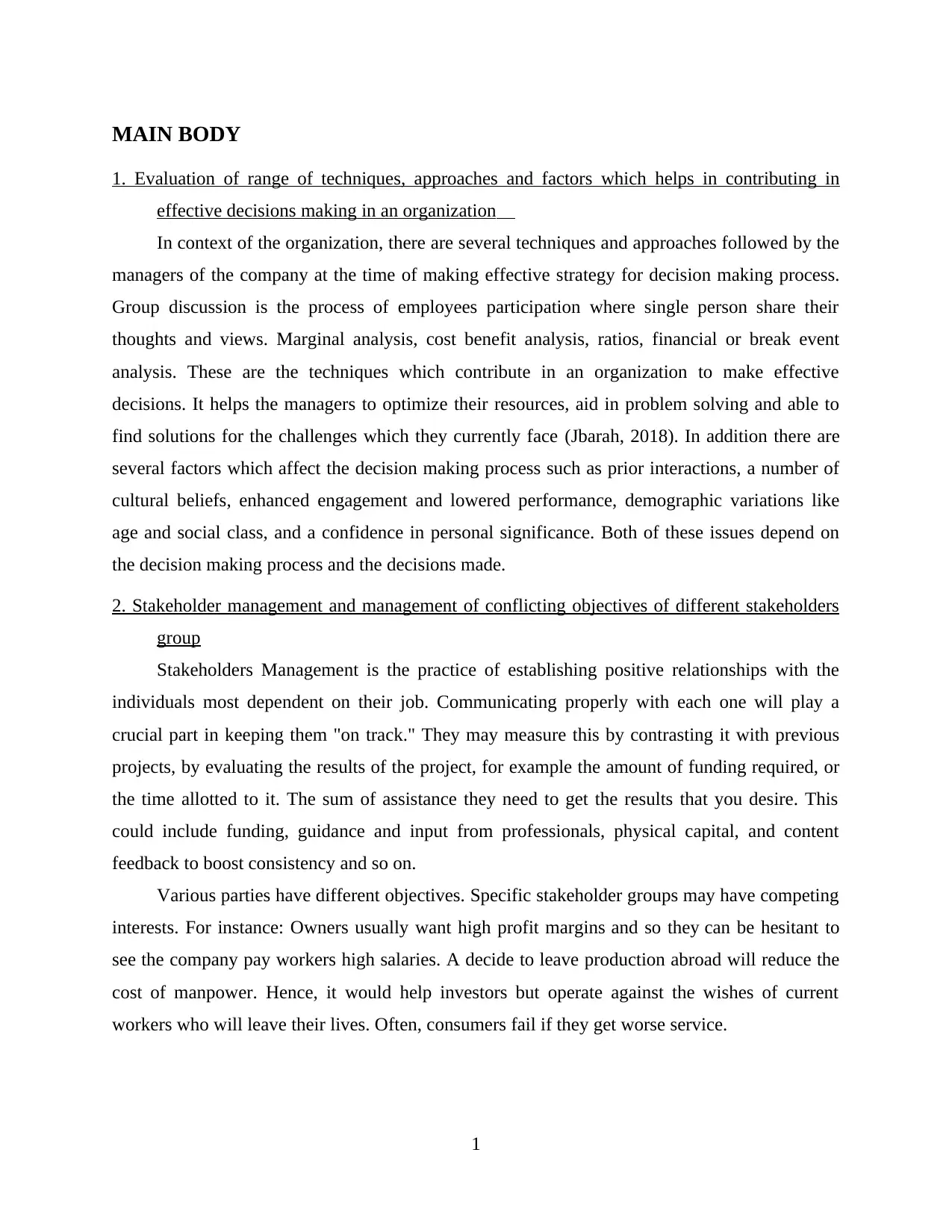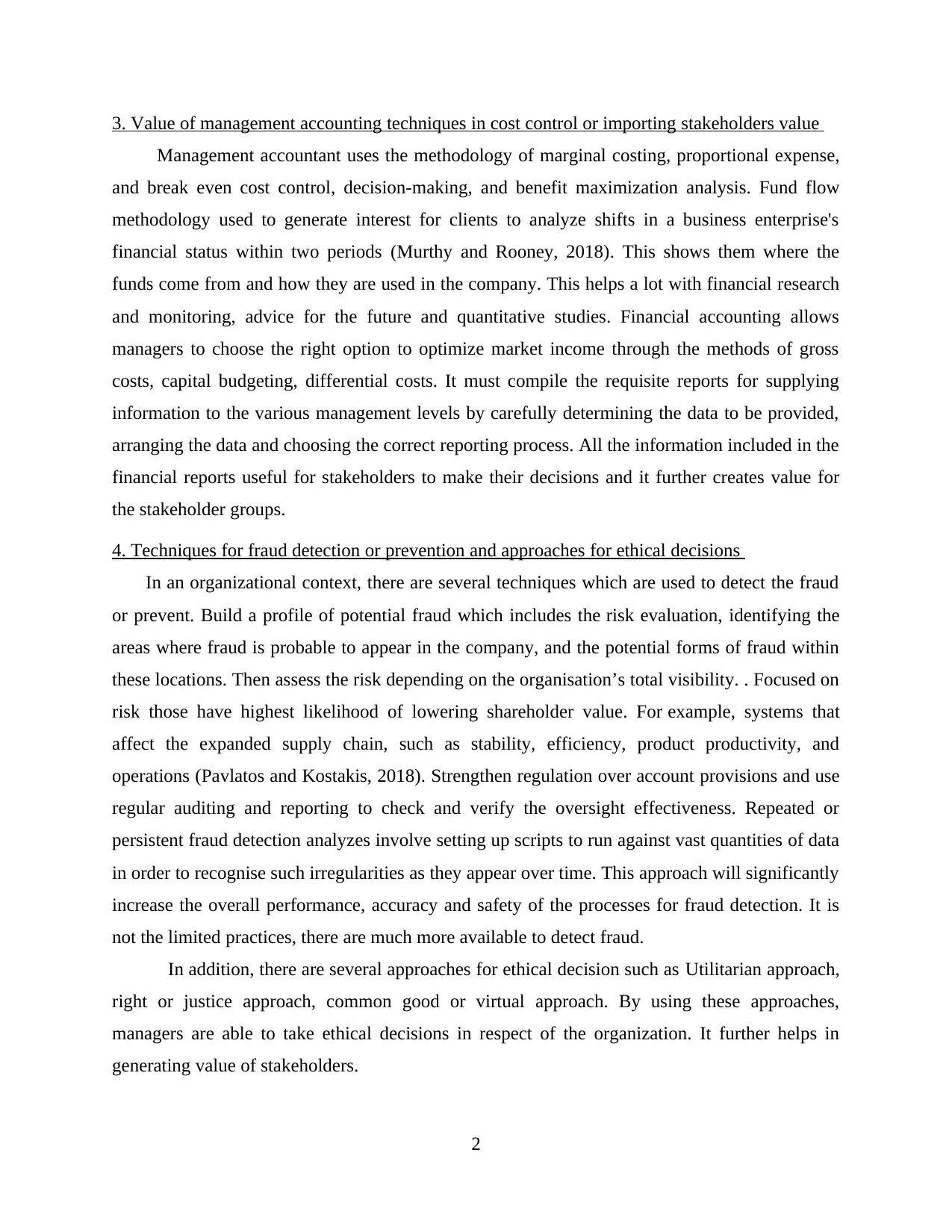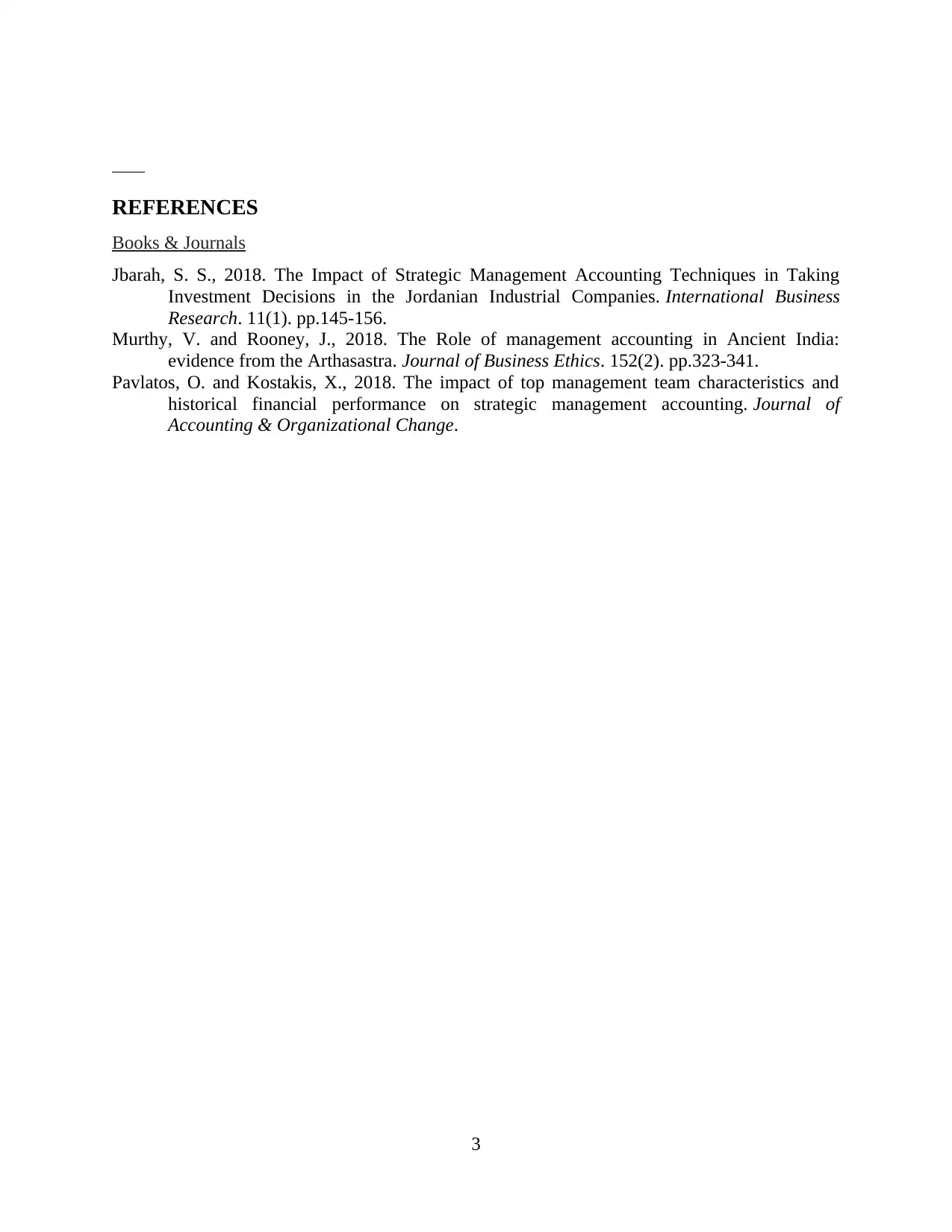BUS301: Decision Making, Stakeholders & Fraud Prevention Report
VerifiedAdded on 2023/01/11
|5
|1029
|88
Report
AI Summary
This report provides an overview of various techniques and approaches employed in organizational decision-making. It evaluates the use of group discussions, marginal analysis, cost-benefit analysis, and financial analysis in contributing to effective decisions. The report also addresses stakeholder management, including managing conflicting objectives among different stakeholder groups. Furthermore, it highlights the value of management accounting techniques in cost control and enhancing stakeholder value. Finally, the report explores techniques for fraud detection and prevention, alongside approaches for making ethical decisions within an organizational context. The report cites relevant academic sources to support its findings.
1 out of 5











![[object Object]](/_next/static/media/star-bottom.7253800d.svg)